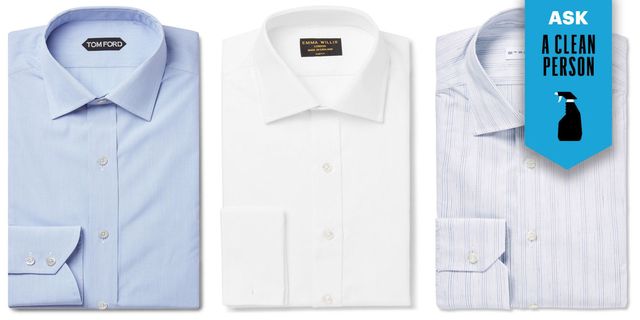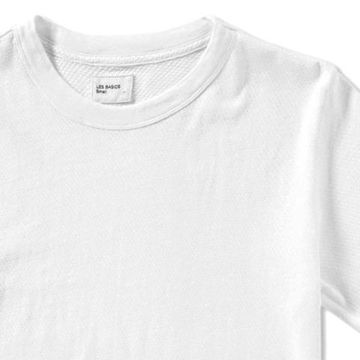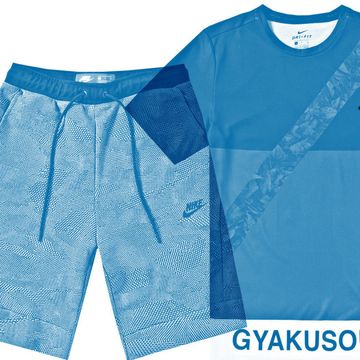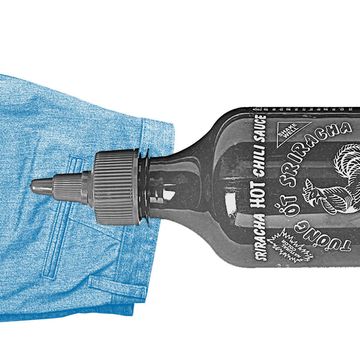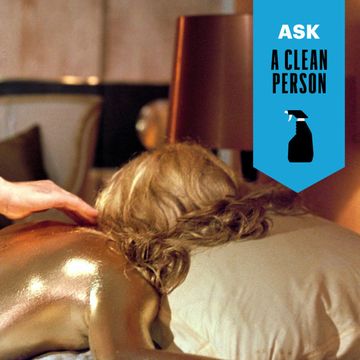Jolie Kerr is a cleaning expert and advice columnist. She'll be here every week helping to answer your filthiest questions. Are you dirty? Email her. Are you still dirty? Subscribe to Ask a Clean Person: The Podcast on Acast, iTunes, or Stitcher, and like Ask a Clean Person on Facebook.
I have a lot of formal dress shirts, but hate bothering with going to the cleaners. Is there a way I can launder these in my apartment (I have a washer and dryer) without beating the shit out of them? — Ben Boskovich, Social Media Editor
Oh there for sure is a way! Before I get into it, a quick note to our readers about a new thing we're going to try out: Once a month, Ask a Clean Person will feature a question from an Esquire staffer. I'm trying this out for a few reasons, including and especially the fact that a bunch of my colleagues ask me stuff anyway. I also figure that if Esquire staff wants to know the answer to a cleaning question, many Esquire readers will also want to know the same.
Speaking of you, our beloved readers! You should absolutely still continue to send me your questions for inclusion in the column, either by emailing me or tweeting at me. Okay, with announcements out of the way, let's turn our attention to answering Ben's very good question.
Machine Washing Dress Shirts Is A-OK…
Here's a thing you may not be aware of: When dress shirts go to the dry cleaner, they're generally not dry cleaned. Hitmesaywhat? Yup! Dry cleaning is a very specific operation that involves the use of solvents, rather than water-based cleaners, in machines that look and function similarly to washing machines. But dry cleaning is not the only service that dry cleaners offer and, especially in the case of dress shirts, the dry cleaner will more often than not perform what's called a "wash and press" service.
"Wash and Press" sounds exactly like what it is — your shirt will be washed in a machine with water and detergent, the way you do at home or in a laundromat, and then it will be pressed straight out of the washing machine, while it's still damp. The service you're paying for, essentially, is the pressing, as well as the convenience of having someone else handle the laundering for you.
While it's perfectly fine to continue to send your dress shirts out, you can certainly replicate the process at home to save money, or just for the convenience factor of not having to make all those trips to the cleaner.
If you do decide to take shirtcare into your own hands, here are your washing instructions:
- Pretreat any stains prior to laundering, including ring around the collar and cuffs.
- Wash shirts using cold water to prevent the placket stitching from shrinking, which is what creates that puckered look where the buttons and buttonholes are.
- Consider using a whitening booster or enzymatic cleaner in concert with your regular detergent to combat the development of pit stains.
- When you remove the shirts from the washing machine, grab them by the shoulders, and give them a good snapping shake to uncrumple them.
- Either transfer the shirts to a hanger or immediately press them.
…But Skip the Dryer
Right, so, you're going to skip machine drying the shirts entirely. In part because you'll get a better result by allowing the shirt to air dry or by pressing it straight out of the wash, and in part because eschewing the dryer will extend the life of the shirt by cutting down on fading and wear.
When you remove the shirt from the washer, give it that snap I already mentioned, and then immediately transfer it either to a hanger, or to an ironing board.
If you go the hanger route, be aware that hangers do matter — avoid using wire hangers, not because of the important lessons to be learned from Mommy Dearest, but because wire hangers are too thin for damp shirts, and will warp the fibers. Wire hangers can also rust from the contact with damp fabric, and leave behind stains. Opt instead to use plastic or, ideally, wooden hangers.
As for where to hang the shirts to dry, if you have a shower with a rod, that's a great place to hang a whole bunch of wet shirts. If you don't have a shower rod setup, you can create a space for hanging by buying a tension rod for the job. You could certainly also find any other rail-type situation in your home and turn it into a makeshift hanging rod, the way one Esquire reader did:
"I do most of the laundry duties in my family. We are lucky that we have a series of natural gas pipes mounted close to the ceiling in our basement. As soon as the clothes come out of the front loading washing machine, I put them on hangers, and hang them up on the gas pipes so that they can drip dry."
So clever! Also, I love hearing from you even if you don't have questions, so feel free to email me just to say hi, or to tell me about a cleaning product you love, or to share a housekeeping system you've developed that others might want to know about.
Pressing Is Optional, But if You're Going to Iron, Here's a Trick
If your dress shirts are of the no-iron variety, or they're casual-but-still-nice, you'll probably be satisfied by the way they look after they've been hung to air dry. But for more formal shirts, or for those of you who prefer a crisper look, you should take a page out of the dry cleaner's book and press shirts immediately after they've come out of the wash. The heat from the iron will dry the shirt, and ironing damp fabric is easier and more effective than ironing dry fabrics.
Care Tags Are Fake News, but You Can Still Find Truth Within
This topic deserves its own column, and I definitely have it on the edit schedule, but since we're here talking about dry cleaning, I think it's worth a detour to talk about care tags, and what to do with the information you can find on them. Let's do this in list form so I can get you out of here and into the laundry room:
- If a care tag says 'dry clean only,' don't believe it. Most dry clean only garments can be safely and successfully cleaned at home, either in the washing machine or by hand washing.
- Don't bother trying to learn what those inscrutable fabric care runes mean.
- Instead, look for the fabric content information on the tag, which is going to be easier to interpret (with a little help from me).
- If a garment is embellished, or its fabric content includes rayon, viscose, or silk, send it to be dry cleaned.
- Otherwise, here's the skinny on how different fabrics like to be handled, and common problems that arise when washing and drying them:
- Polyester, nylon, and spandex are almost always machine washable. Nylon tends to get staticky, but opting for air drying, rather than machine drying, will eliminate that problem. Chlorine bleach should never be used on garments containing Spandex.
- Cotton and linen are prone to shrinking and fading. Washing in cold water in the wash and air drying, or machine drying on low- or no-heat, will address both problems.
- Wool, silk, and rayon/viscose are fabrics that don't love exposure to water; while wool and silk can be hand-washed, clothing that contains rayon or viscose should only be dry cleaned.
Once you know those basics about fabric types, you can make much more informed choices about whether to send an item of clothing out to be professionally cleaned, or to wash at home. It certainly bears repeating, however, that there's a lot to be said for the convenience and level of service of sending your clothes to the dry cleaner.
